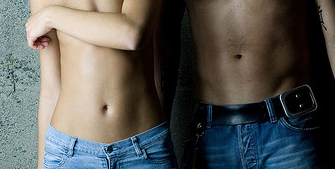Photo by Anete Lucina via unsplash.com, edited by KT
In the last month of 2016, I was deeply struck by the death of AA Gill, a "journo giant", who died from cancer. It inspired me to write this article about why being human to each other, and to ourselves, can have a profound affect in healing and recovery and at the very least make an individual feel that they matter, especially when facing terminal illness.
AA Gill's last article, published just one day after his death explained his traumatic and frustrating journey of care from the NHS in the last months of his life. I was struck by how beautifully he narrated his situation. He was denied a life lengthening treatment, immunotherapy, because it is too expensive to get on the NHS. He acknowledged the genuine care towards of the people who work within the NHS towards him, mentioning in particular a nurse who was devastated to learn that his chemo was no longer working. He ended his article by saying, "you don't get that in the private sector" referring to the humanity and empathy of the nurse.
You can read AA Gill's parting gift to the world here:
Same same but same
The turn of a new year always makes us a bit more philosophical as we look back at what we have achieved and then look forward to what lies ahead for us. I see countless Facebook posts about 2017 being the year of kindness, of solidarity, peace, togetherness, humanity. I myself posted my new years message, urging people "to be the change you want to see". New year or mid year, we all want the same thing to feel the humanity of others and to feel that we matter. It's what connects us and it has powerful healing properties.
How to be human
Above all, whether you work with people or have people in your life who are in pain or recovering or not, the way we can help each other in a daily way is just by being human. Being human to me means being kind. It means holding space for someone when they need you; listening to someone in need of being heard; giving of your time, energy and love. It also means holding space for yourself, listening to yourself and allowing yourself to be quiet, giving back to and loving yourself. I believe the body knows how to heal itself otherwise our species would not have survived this long. It needs the right conditions - physically, mentally and emotionally to help it along.
Humanity heals
This is relevant in our personal lives, in our work life and particularly in medicine and therapy when you seek help for illness and injury. Being human or what the medical profession often call "bedside manner", can have a profound affect on your perception and ability to recover. It is really important that you choose therapists and medical practitioners you trust, have a good relationship with and who hold space for you without judgement or ego during your healing and recovery. If you feel you need more "human" than what is being offered do not be afraid to walk away and find therapists who better suit your needs. My new guru, the late Louis Gifford, believed that the human part of therapy and medicine is as important as the healing of tissue, because you, your consciousness, is part of that healing. Your synaptic connections, your thoughts, play a part in what messages get sent from the brain to the tissues. Feeling safe and cared for positively impacts your emotional and mental outlook on recovery.
Human yourself
And kindness and humanity doesn't always have to come from others. Being human to yourself is just as important. I firmly believe part of the self-management of your own injury or condition is being kind, loving and compassionate to yourself. So go be more human to yourself and others in 2017 and see what impact it has on your healing and recovery, your life and the lives of those around you.
If you are struggling with an ongoing injury, or have suffered with ongoing pain that just won't go away we can help. Please contact KT at KT@precisionmovement.co.uk for a complimentary phone conversation.

























